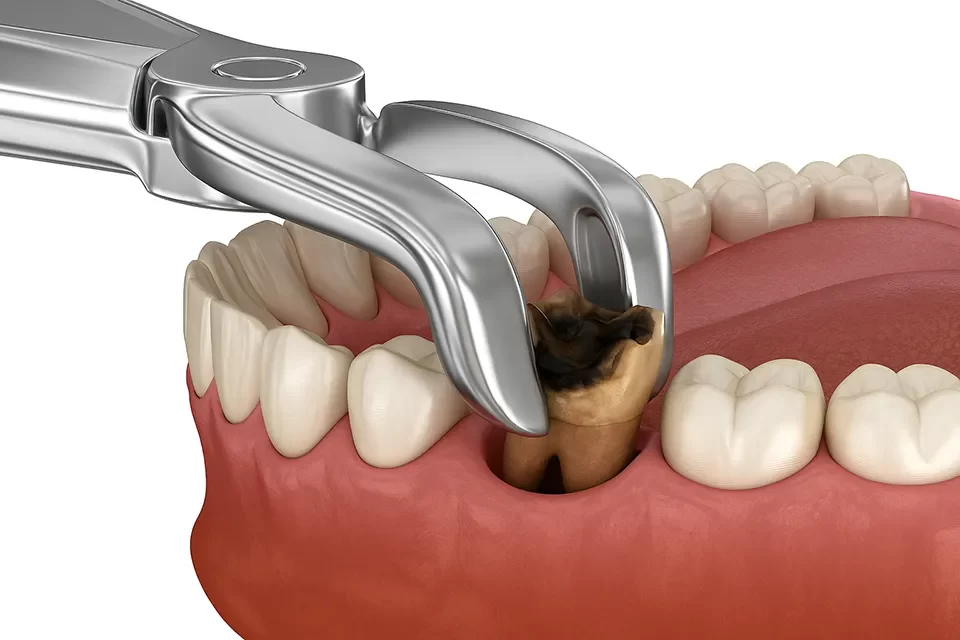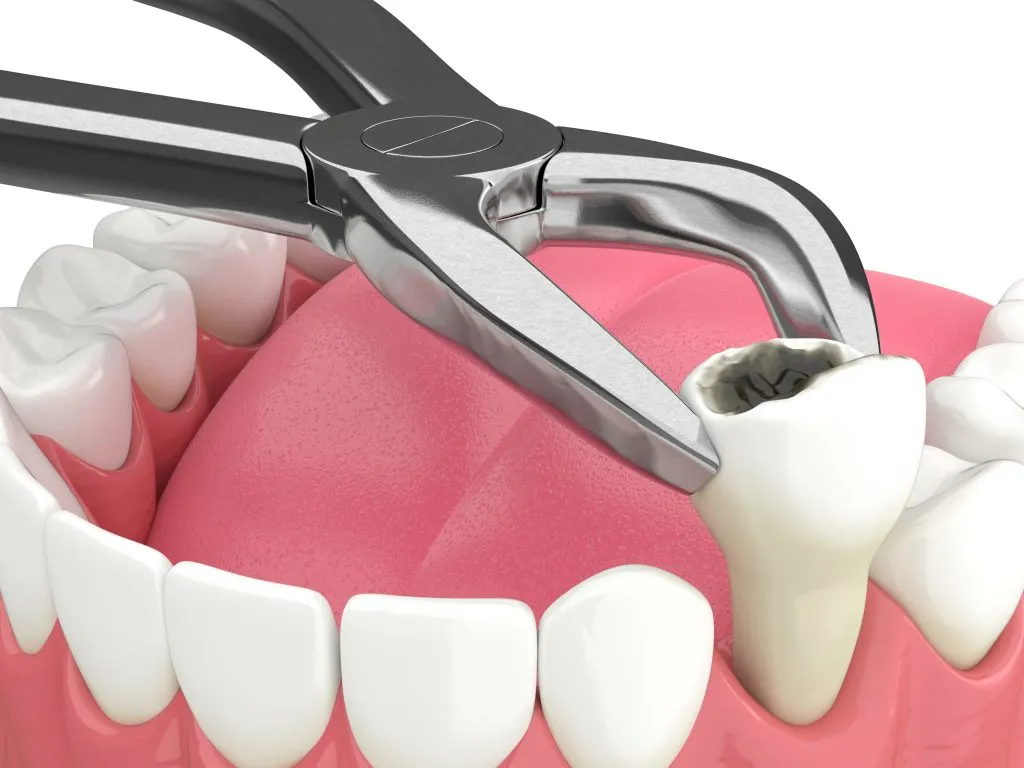"Experience Comfortable Tooth Extraction at Nalamm Dental Cosmetiks in Kumbakonam"
Where Gentle Meets Expert

Where Gentle Meets Expert

Life is full of surprises, and sometimes one of them is that pesky tooth that just won’t stay healthy. Whether it’s from decay, trauma, or crowding, there are times when a dentist must recommend a tooth extraction. But that doesn’t mean your dental journey ends — it’s just the next step toward a healthier smile.
If you’re searching for “Tooth extraction – nalamm dental cosmetiks in kumbakonam”, you’re in the right place. In this blog, we’ll walk you through:
Why tooth extraction sometimes becomes necessary
What factors influence whether extraction is the best path
How the procedure works (step by step)
What to expect in terms of aftercare, comfort, and recovery
Why Nalamm Dental Cosmetiks in Kumbakonam is a trusted choice
Tips for making your experience smoother
Common myths and FAQs
By the end, you’ll feel more confident about extraction decisions and know why Nalamm Dental is a name you can trust.

It might feel drastic, but tooth extraction can often be the healthiest option when preserving the tooth is no longer viable. Here are some of the common reasons:
When a cavity advances so far that it reaches the pulp (innermost nerve & blood vessels) and causes irreversible damage or abscess, extraction might become the only path, especially if root canal treatment isn’t viable.
When periodontitis damages the supporting bone to a severe degree, teeth can become loose and nonrestorable. Extracting them may be the safer route to prevent further infection and protect neighboring teeth.
Wisdom teeth (third molars) often don’t have space to erupt properly and can cause pain, infections, or damage to adjacent teeth. In such cases, extraction is common.
Sometimes teeth need to be removed to make room for braces, implants, or dentures. Removal helps achieve better alignment or prosthetic fit.
If a tooth is fractured in a way that cannot be reconstructed (e.g. root is split), extraction might be the only viable option.
If a prior root‑canal treated tooth fails and cannot be retreated, extraction may be safer than repeated procedures.
In all these cases, the goal is to preserve overall oral health, relieve pain, and prepare for replacements (implant, bridge, denture) as needed.
Knowing what to expect can ease anxiety. Here’s what a typical extraction process looks like, such as what you’d experience at Nalamm Dental Cosmetiks in Kumbakonam.
First, your dentist examines the tooth and surrounding tissue. They may take an X-ray or cone‑beam CT scan to see root shape, bone level, and adjacent anatomy.
The dentist discusses whether extraction is the best option and outlines potential complications, alternatives, cost, and aftercare. You’ll give informed consent.
Local anesthesia is administered to numb the area. Depending on patient comfort and complexity, mild sedation (oral or IV) might also be offered.
Simple extraction: For teeth with a straight, uncomplicated root, the dentist uses forceps and elevators to gently loosen and remove the tooth.
Surgical extraction: For complex cases (impacted teeth, broken roots, curved or fused roots), a small incision is made in the gum, bone may be removed, the tooth may be sectioned (cut into parts) and then extracted.
Once the tooth is out, the socket is cleaned of debris, infected tissue, or fragments. Sometimes a bone graft or membrane may be placed to preserve bone (especially if planning later implants).
Incisions (if any) are closed with stitches (resorbable or conventional). These help with healing and controlling bleeding.
You’ll receive detailed aftercare instructions (see next section). The dentist monitors you for a short time before dismissal, ensuring bleeding is controlled and comfort is acceptable.
When done by experienced hands in a clean, well-equipped clinic like Nalamm, extraction is typically safe, efficient, and as comfortable as possible.
Your cooperation after extraction plays a big role in healing smoothly. Here’s how to make it comfortable and safe.
Bite on gauze: You’ll be asked to bite on a gauze pad for ~30–60 minutes to help clot formation. Replace gauze when saturated (but avoid unnecessary dislodgement).
Ice packs: Apply ice packs to reduce swelling (10–15 minutes on, 10 off).
Rest & avoid exertion: Keep activity light; avoid bending, heavy lifting, exercise.
Avoid disturbing the area: Don’t poke or touch the extraction site with fingers or tongue. Avoid rinsing or spitting hard within first 24 h.
Soft diet: Eat soft, cool or lukewarm foods (e.g. yogurt, mashed potatoes, soups). Avoid crunchy, spicy, hot, or chewy items that might irritate the site.
Hydration: Drink water—but avoid sucking through straws, which can dislodge clot.
Oral hygiene: Brush gently, avoiding extraction area initially. After 24 h, gentle saltwater rinses (warm salt in water) may be recommended to keep area clean.
The dentist likely prescribes pain relief (NSAIDs or analgesics) and sometimes antibiotics (if infection risk).
Use medications exactly as prescribed; do not skip doses in early post‑operative days.
Mild swelling and bruising are common and typically subside over a few days.
Minor oozing is normal. If you experience persistent heavy bleeding (soaking through gauze), or swelling worsening after day 3, medical review is needed.
If non‑resorbable sutures were used, they may need removal in 5–7 days.
A follow-up visit also lets the dentist check bone healing or plan replacement (implant/bridge) if desired.
Over weeks to months, the bone remodels and soft tissues mature.
Maintaining good oral hygiene and periodic checkups are vital.
If you plan a dental implant or prosthetic, healing time (3–4 months or more) is common.
There are many dentists, but Nalamm Dental Cosmetiks stands out, and here’s why they are often trusted for procedures like tooth extraction:
Nalamm Dental Cosmetiks is well known in Kumbakonam and Thanjavur as a leading clinic offering cosmetic and general dental services. Nalamm Dental Hospital
They operate under ISO 9001:2015 certification, indicating a commitment to quality systems. Nalamm Dental Hospital
The clinic has award-winning dentists and specialists. Their staff is experienced in both routine and complex extractions, implants, and cosmetic dentistry. Nalamm Dental Hospital+1
Nalamm uses advanced dental equipment, ensuring precision, safety, and comfort for patients. Nalamm Dental Hospital
They also advertise themselves as the region’s dedicated cosmetic dental clinic, meaning aesthetics and function are both prioritized. Nalamm Dental Hospital
From the first contact through aftercare, Nalamm emphasizes a smooth experience: calm environment, private rooms, personalized care, and staff support. Nalamm Dental Hospital+1
Nalamm Dental Cosmetiks is located in Kumbakonam (No. 22, Swaminathan Nagar Jotichakra Medical Centre Complex, Old Palakkarai) Nalamm Dental Hospital+1
For local patients, this means ease of appointments, reduced travel stress, and continuity of care.
Beyond extraction, Nalamm provides implants, cosmetic dentistry, braces/Invisalign, restorations, and more. This allows integrated planning — e.g. you can extract a tooth and later plan for an implant, all under one roof. Nalamm Dental Hospital+1
Nalamm is listed on directories (Justdial) with good ratings. Justdial
Its social media presence showcases successful cases, patient stories, and clinic features. Instagram+1
In sum: for a high-stakes procedure like tooth extraction, choosing a clinic with both technical capability and patient-centered values like Nalamm is wise.
Here are some practical tips that help make your extraction journey smoother and more comfortable:
Choose a reputable clinic — credentials, reviews, technology, and staff matter.
Ask questions beforehand — get clarity on anesthesia, sedation, risks, cost, alternatives.
Disclose full medical history — medicines, allergies, systemic diseases matter.
Follow pre-procedure instructions — fasting, medications, planning for ride home if sedation used.
Arrange for rest & support post-surgery — don’t plan heavy tasks the same day.
Follow all aftercare guidance strictly — clot preservation, antibiotics, diet, hygiene.
Attend follow-up visits — early detection of complications (dry socket, infection).
Prepare for replacement — if you plan implants, bridges or dentures, start that discussion early.
Maintain oral hygiene gently — avoid trauma near the site but keep surrounding teeth cleaned.
Stay in communication — if unusual pain, swelling, bleeding arises, contact your dentist immediately.
Myth 1: “Extraction is extremely painful.”
Truth: With modern anesthesia, extraction should be pain-free during the procedure. Post‑op discomfort is manageable with medications.
Myth 2: “Once a tooth is removed, the gap doesn’t matter.”
Truth: A missing tooth can lead to shifting of adjacent teeth, bite issues, bone loss. Planning for a replacement (implant, bridge) is often advised.
Myth 3: “You can smoke immediately after extraction.”
Truth: Smoking increases risk of dry socket (painful exposure of bone) and infection. Avoid smoking for several days.
Myth 4: “I don’t need antibiotics; it heals on its own.”
Truth: In many healthy patients, antibiotics may not be necessary, but if infection risk is high (e.g. immunocompromised, history), the dentist may prescribe them.
Myth 5: “My dentist can’t extract a severely impacted tooth — I need a specialist.”
Truth: Many general dentists do extractions, but for complex or surgical extractions, an oral surgeon or experienced dentist is preferred. Nalamm likely has the capability for a range of extractions given their profile.
FAQ – How long before I can eat normally?
Usually soft foods immediately; avoid chewing on extraction side for a few days. After ~7–10 days, gradually resume your normal diet unless otherwise advised.
FAQ – When can I brush near the site?
Avoid brushing the socket for the first 24 h. After that, you can gently brush neighboring teeth and use salt rinse kindly. Avoid harsh brushing.
FAQ – How long does full healing take?
Soft tissue closure occurs in ~1–2 weeks; underlying bone remodeling can continue for months. If you plan implant placement, often wait 3–4 months or as advised.

Facing a tooth extraction might feel intimidating, but with the right information and the right care provider, it becomes a manageable step toward better oral health. When searching for “Tooth extraction – nalamm dental cosmetiks in kumbakonam”, you want confidence — confidence in the team, the technology, the process, and your own recovery.
Nalamm Dental Cosmetiks combines technical proficiency, patient‑centered care, and a reputation rooted in Kumbakonam and surrounding regions. For many patients, they represent a trusted option for both routine and complex dental needs.